
2024 Odd Spot Plants EVENTS
Odd Spot Plants will have MORE rare and unusual plants in MORE locations at MORE Plant Markets and Plant Fairs in 2024… The Tropic Plant
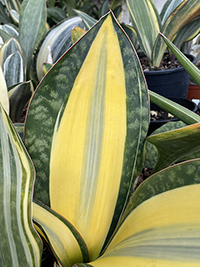
The variegated form of Sansevieria masoniana or Whale Fin – is quite beautiful. Most people react in total awe when they sight them for the first time.
The Yellow Variegated Sansevieria masoniana is very striking and catches the eye. The White Variegated Sansevieria masoniana is serene and majestic, making a great display. And the one I call Lime Variegated Sansevieria masoniana, is stunning and different to the others.
But no matter which Variegated Whale Fin you like, it is important to understand the Variegation. It is not a set pattern – just because one leaf has little variegation on it does not mean the next off-set (pup or baby) will be the same.
Take a look at these photos below, to see some great examples of the variation you will get. It is part of the FUN of owning a variegated Sansevieria.
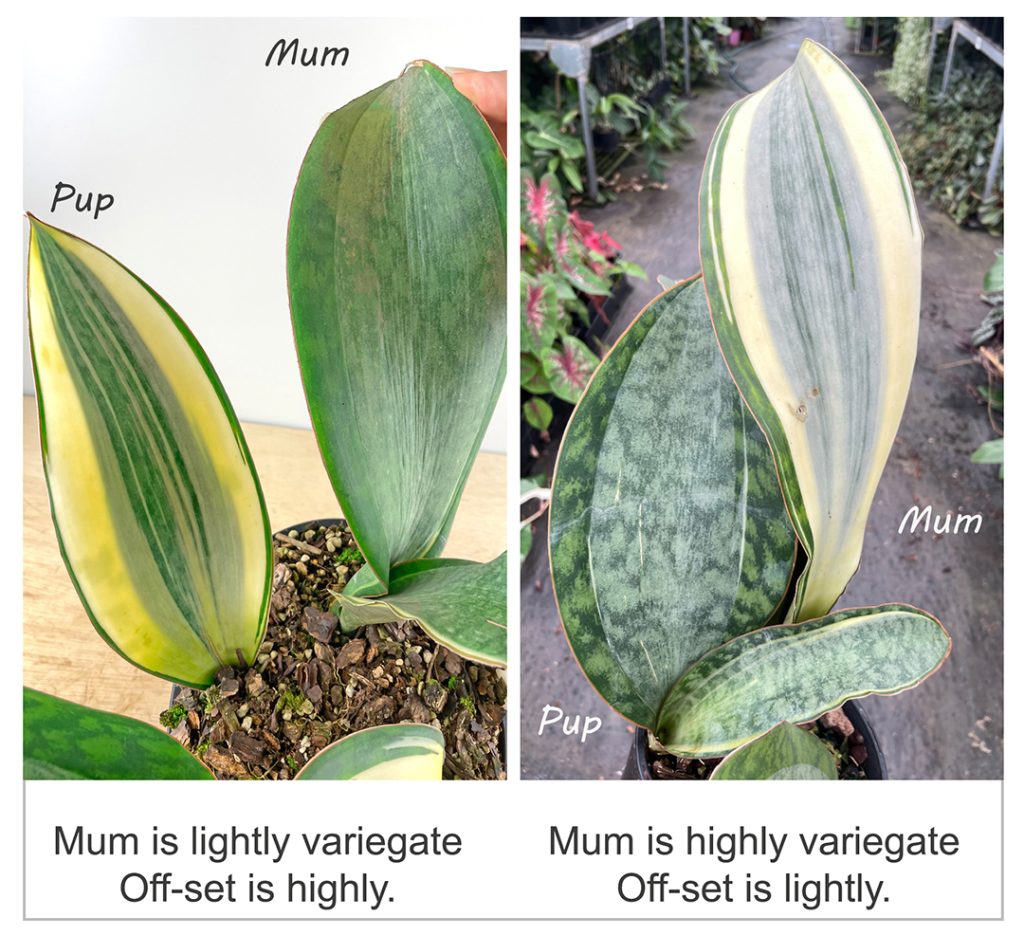
When the Whale Fin is mature it will tend to produce just one leaf per shoot ie a pup will be just one huge leaf. But in the earlier stages the plants sometimes send up two leaves (and sometimes several leaves in a rosette – I wrote about that unusual behavior here -> Whale Fin Rosette ). AND these two leaves can be very different in pattern just like other variegated plants.

.
Your Whale Fin plant has an underground rhizome. On this rhizome are ‘eyes’ (buds) which have the ability to grow into a new plant. They are quite difficult to see on the Whale fin but there are dozens on the rhizome in the photo below.
When your Mother plant is healthy enough an ‘eye’ initiates and produces a new plant. We call this new plant an Off-set or Pup or some call it a baby.
There are several different types of variegation (and that is a topic for another article). And with the Whale Fins it is important to realise that this variegation is a Chimera or Chimeral variegation.

Anyone remembers the “Centaur” (half horse – half human) from Greek mythology or more recent Harry Potter. That is a Chimera. The photo here might prompt the memory (Image from https://dictionary.cambridge.org/fr/dictionnaire/anglais/centaur).
A chimera is a single organism composed of cells with more than one distinct genotype and is caused by genetic mutation (which is a natural thing).
So, in the case of our White Variegated Sansevieria masoniana the plant has two different ‘types’ of chromosomes. One set that allows cells to produce chlorophyll (green) and one set of chromosomes that cannot (white).
And so, these two different chromosomes “fight” it out for who displays and who doesn’t. Obviously, it is much more complicated than this – and whole PHD’s and lifetimes of research can and are dedicated to it.
This type of variegation is deemed “unstable” because from time to time these plants can revert to “all green” (very, very rarely have we seen this) and also “all white” (have not seem them do this personally and we have grown hundreds).
So far, our experience of the strains of Variegated Sansevieria masoniana that we have, is they seem to hold the variegation well and we do not see much reverting BUT you can never tell what the next leaf will present with. Will it have heaps of white or just a little? No one knows.
So now you know why the variegation occurs – you will understand why all the advice on “more sun” or “less sun” will give you better variegation is just urban myth. It is all to do with the chromosomes and out of our control. All the extra or less sun will do, will maybe make the plant more healthy and make the colour more visible.
.
So, your Mother is highly variegated and the off-set (pup) is not. The first thing is not to panic. I recently had someone tell me theirs had reverted – it hadn’t the pup was in fact still variegated just very lightly.
As I mentioned above they can revert but we have grown hundreds and rarely does a pup come with no variegation at all.
So what do you do? When the off-set is fully unfurled and leaf is flattening, it is time to cut it off the Mother. Sterilise your secateurs and cut the new Whale Fin off at the Mother’s rhizome. You now have two separate plants to pot up.
By cutting the pup off the Mother, it will stimulate her to produce another baby more quickly and hopefully this time you will get the colour you want. (But no guarantees, read beginning of article again ????). And as the pup grows it will in time mature and send up it’s own off-set which again will be something new and different.
Whale Fins are not the quickest growing so this is something to enjoy for years to come.
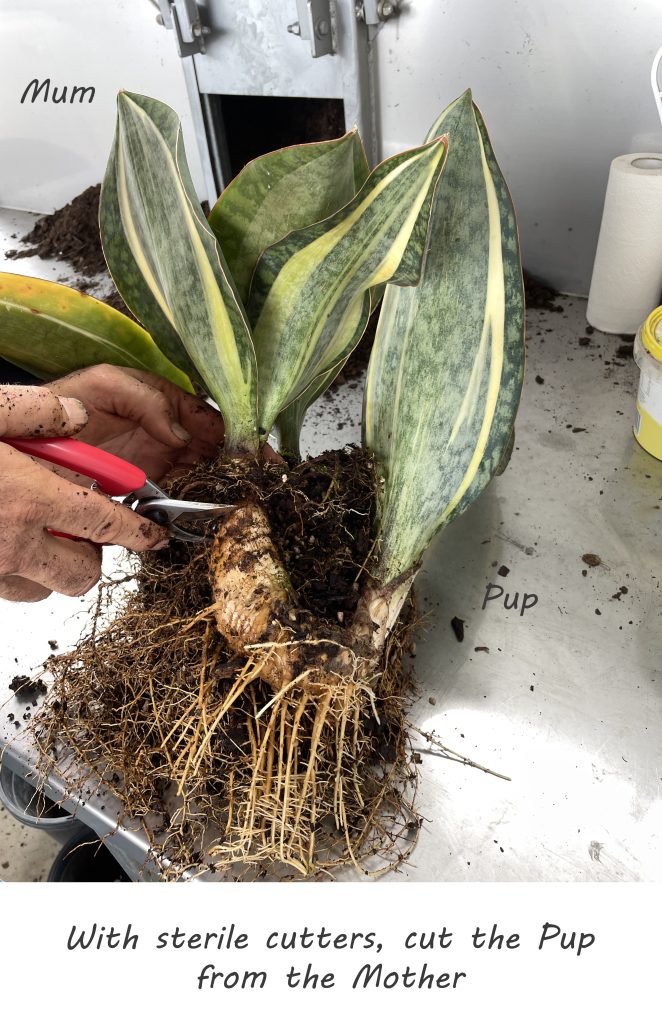
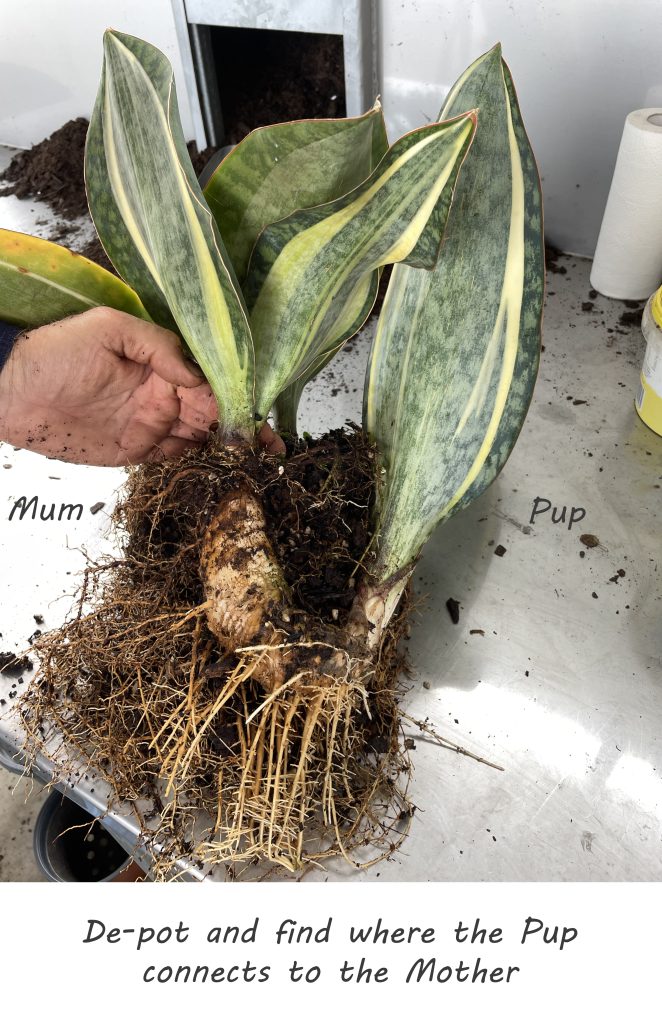
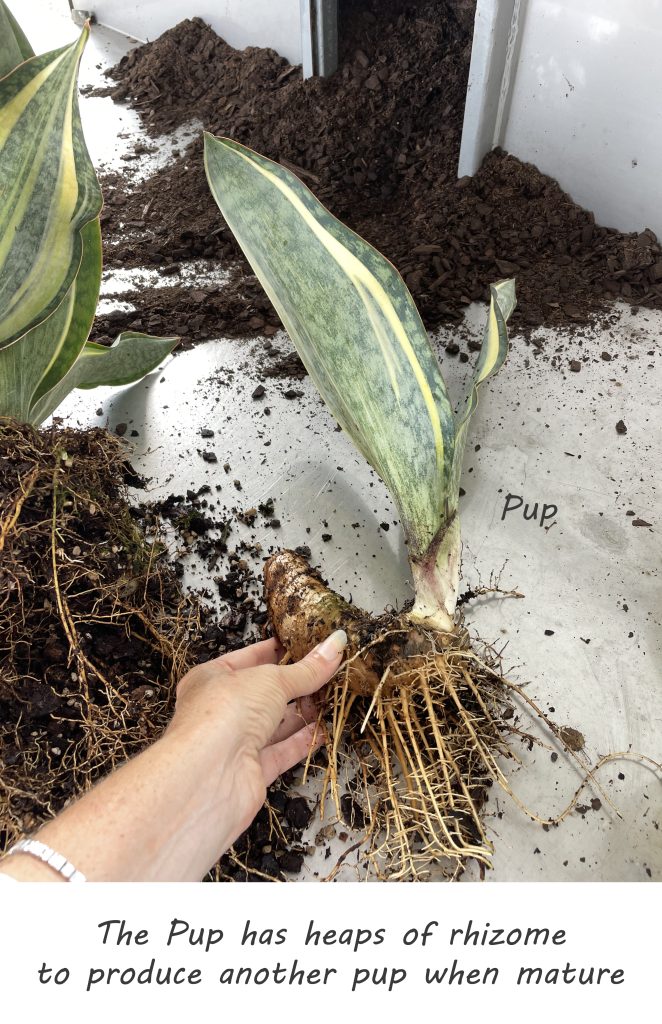
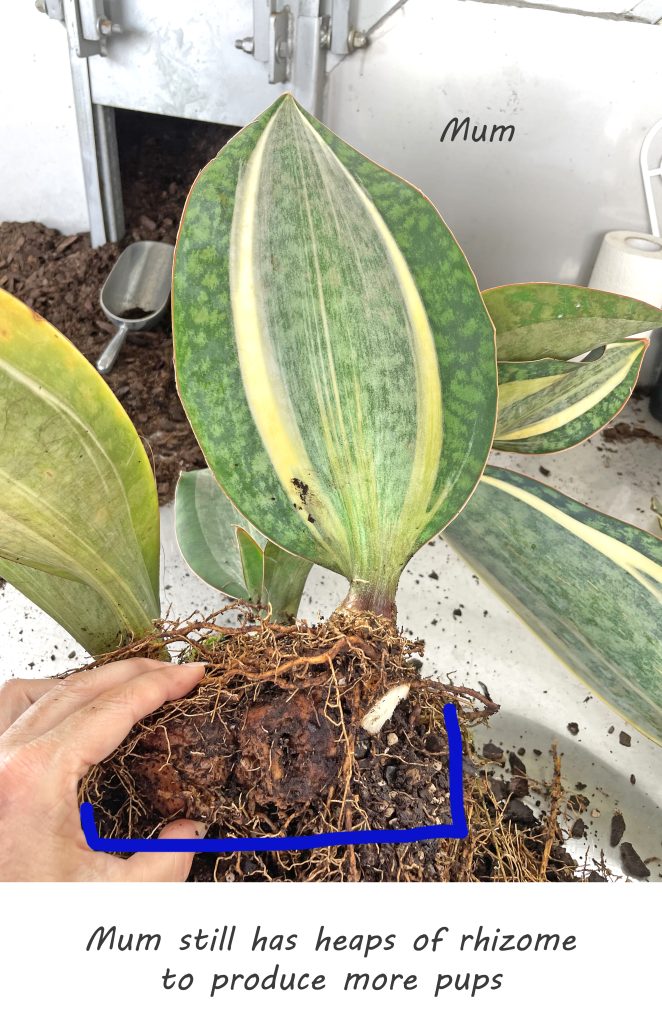
The same as above. Cut off the off-set and Mum will send another and this time hopefully she behaves ???? and sends you a beauty. I’d still pot up the pup, as maybe it’s not really reverted and even if it was you now have a plain Whale Fin.
.
The variegation is all the in genetics; each leaf is gorgeous and unique – enjoy your Whale Fin for years to come.
Happy Growing
Lisa

Odd Spot Plants will have MORE rare and unusual plants in MORE locations at MORE Plant Markets and Plant Fairs in 2024… The Tropic Plant

2024 Tropical Foliage Festival – 23 November 2024 at Belmont Shooting Complex, 1485 Old Cleveland Road, Belmont, QLD. Odd Spot Plants are coming back to

9 Nov 2024 Tropical Plant Spectacular Mt Coot-tha Auditorium @ the Mt Cootha Botanical Gardens, Brisbane QLD. ???? Saturday 9 November 2024???? Mount Coot-Tha Auditorim,